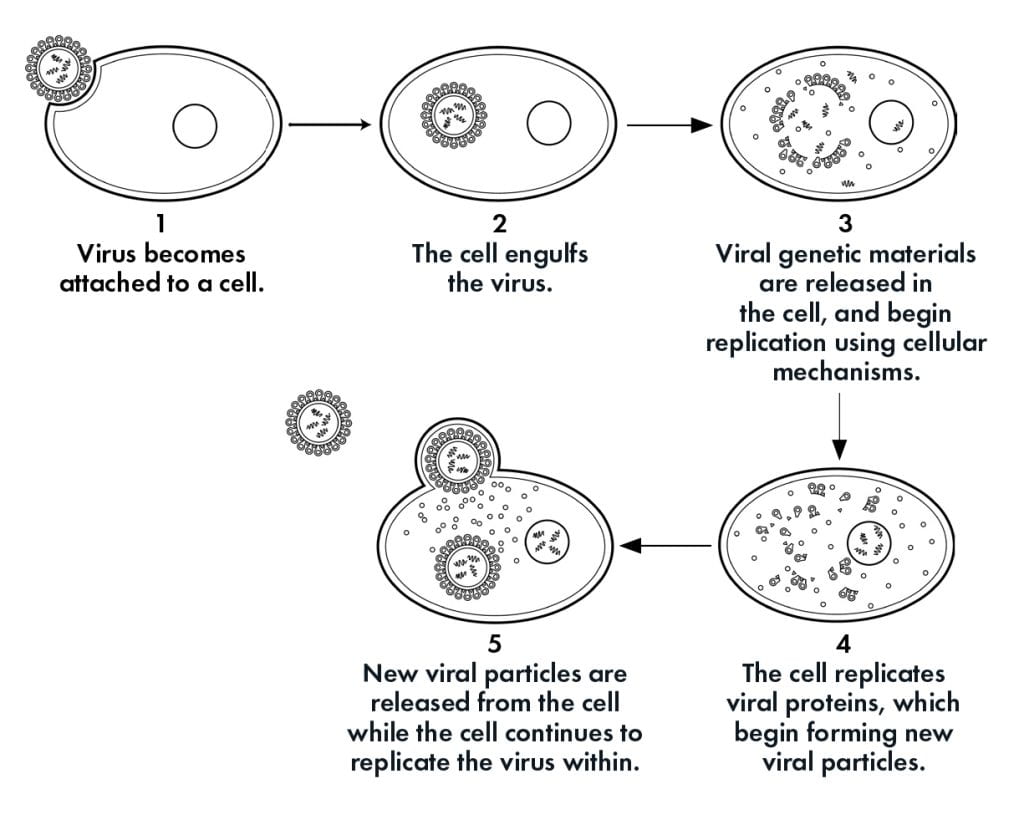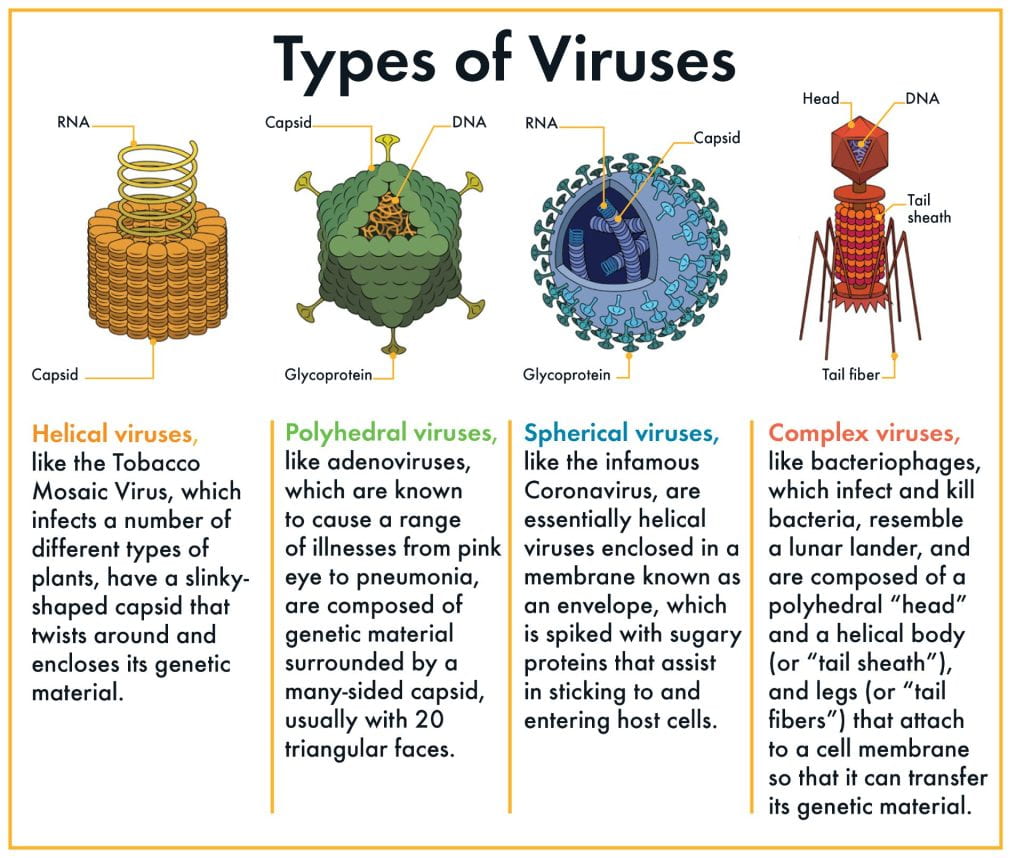A World of Viruses
Viruses All Around Us
What comes to mind when you hear the word “virus”? Perhaps the common cold, a cold sore, or maybe even a global pandemic, such as the one we are living in now, caused by a coronavirus that may have originated in bats.
In fact, viruses are ever-present in the living world, infecting, affecting, and interacting with all organisms, from the minuscule to the gigantic, and can be found in every ecosystem on the planet. They are as ubiquitous and essential to our lives as the air we breathe, the water we drink, and the food we eat. But what, exactly, are they? Are they alive? What do they do, and how do they do it?
Small, but Mighty
Viruses are the smallest of all microbes. It would take 500 million rhinoviruses, the virus known to cause the common cold, to cover the head of a pin. They exist by hijacking the cellular machinery of another living thing in order to reproduce. An individual virus known as a virion does this by injecting its genetic material, packets of nucleic acids known as RNA and/or DNA, into a host cell. They then replicate within, and ultimately explode out of, the cell in the form of new virions ready to infect other cells. These minuscule microbes can pack a powerful punch, infecting us with an array of diseases from chicken pox to AIDS. To see how a virus enters a host cell, check out this animation.

Viruses are Everywhere
Viruses do not only infect humans. They are, in fact, ever present in our world, occupying nearly all organisms, and found in virtually every type of habitat, even in the air we breathe and the deepest depths of the ocean. They are also ancient, predating some of the earliest forms of life. Scientists believe they are at least as old as the first cells, which emerged around 4 billion years ago, but viruses could be even older, existing in the precellular world as self-replicating entities that subsequently evolved into forms that parasitize other cells.

Coronavirus
COVID-19 is the disease caused by the new coronavirus, seen below, an airborne virus that emerged in China in December 2019, and subsequently led to the global pandemic of 2020. Harvard Medical School created an online learning module on how the human body reacts to viruses like Covid-19. You can find it here.
Are Viruses Alive?
Viruses occupy a space on the tree of life that blurs the line between existence and nonexistence. Life is generally defined as an organism that can live and reproduce autonomously using its own energy-producing biological mechanisms.
Viruses, on the other hand, are essentially parasites that, in order to multiply, must harness a host cell’s replication mechanisms. Because they are unable to do any of this on their own, some argue that they are not among the living. However, other scientists suggest that because viruses are made up of the same building blocks of life, DNA and RNA, they verge on life. It’s an ongoing debate that has remained largely unresolved in the scientific community for the last 100 years.

Viral Shapes
Viruses come in many different shapes and sizes, but all are made of two essential components: a core of genetic material, either DNA or RNA, which is surrounded by a protective protein coat called a capsid. Packaged together, a single virion comes in four different shapes: helical, polyhedral, spherical, and complex.
Viral Assemblies
How can you fight something you can’t see? Viruses like influenza spread so effectively, and as a result can be so deadly, because of their ability to spontaneously self-assemble in large numbers.
Researchers at the Harvard John A. Paulson School of Engineering and Applied Sciences have engineered a new way to observe and track viruses as they assemble. This new method may spot weaknesses in viruses that drug makers can exploit to design drugs that prevent viruses from assembling in the first place.
Studying the Invisible
Virus are extremely tiny, even tinier than bacteria, so how do scientists study them? Hannah Gavin, a microbiologist at Harvard, shows us how she does just that in this video.
Viral Alliances
Though viruses are most often associated with illness, they can be a friend as well as a foe. Scientists have learned to manipulate their unique characteristics as a scientific tool.
Bacteriophages are types of viruses that attack bacteria by attaching to bacterial cells and injecting their genetic material into them. Harnessed correctly, this can stop a bacterial infection in its tracks. In this way, phage therapy has been used to treat bacterial infections in humans by injecting the bacteria causing the infection with bacteriophages that essentially stop it from spreading. Similarly, viruses may ultimately save the American Chestnut, an iconic tree species nearly wiped out by a bacterial infection called Chestnut Blight. Scientists have figured out a way to supercharge a virus that attacks the Blight, preventing infection from spreading throughout the tree.

American Chestnut
The American Chestnut, once considered one of the most important forest trees in North America, was nearly wiped out by Chestnut Blight in the first half of the twentieth century, but may recover with the help of viruses.